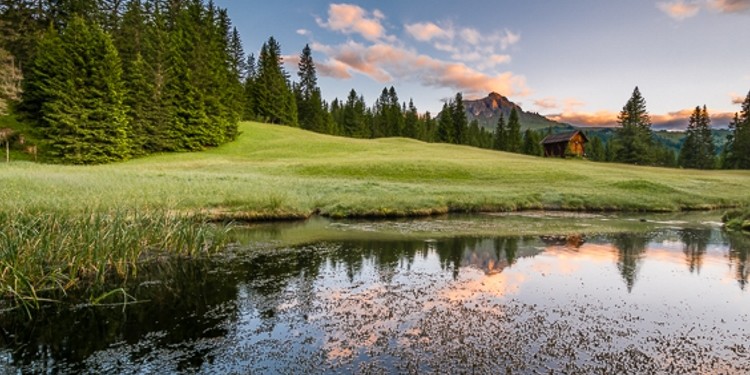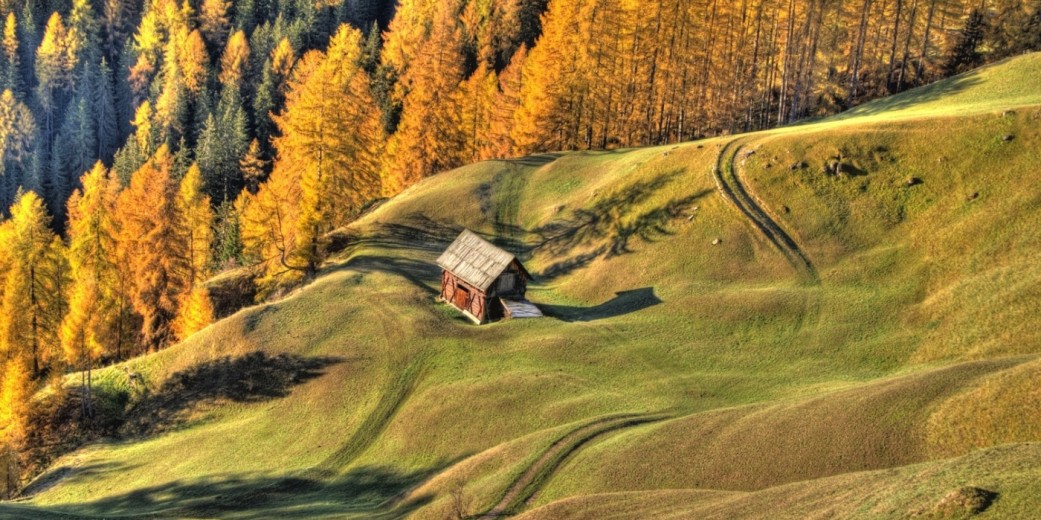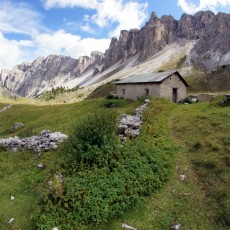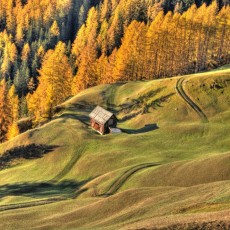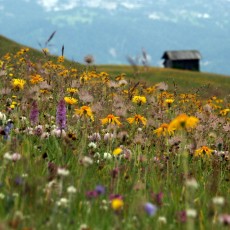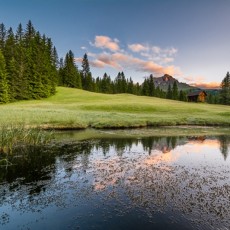Species-rich mountain meadows, pastures and larch forests
Around Lungiarü the landscape metamorphoses from a beautiful valley landscape into the scenery typical of high Alpine mountains. A number of mountain meadows rich in species extend out at the foot of the famed Dolomite massifs Pütia/ Peitlerkofel and the summits of the Puez group, and vast forests of pine, larch and stone pine complete the picture.
Mountain pastures
Traditional forms of cultivation have made it possible to sustain a true balance between man and nature in terms of both ecology and landscape. As in the whole of South Tyrol, alpine farming looks back on a long tradition in Lungiarü and is one of the oldest forms of land use in the Alpine region. When hiking on the alpine pastures of Antersasc, Funtanacia, Medalghes, Poz, Munt de Ví and others, one can stop off at authentic mountain huts, free of mass production, and get a true feel for the rural roots of this area.
Larch forests
Forestland has always been used for a variety of purposes by mankind here in Lungiarü. One peculiarity of the landscape, however, is to be found in the clearances in the larch woodland. Closely connected with the traditional agricultural practices in the area of the Viles, the larch forest provides an important protective role, and the history of the people of Lungiarü goes hand in hand with the history of the forest. The forest played a particularly important role here in medieval times: Year by year, the settlers worked to expand the expanse of cultivated land; this gave rise to in small clearing islands, and the first farms. Over the course of the centuries Lungiarü transformed from a natural landscape to a cultivated landscape through the influence of man, and an area which has constantly metamorphosed through its changing usage.
The two protected headwaters of Les Cialdires and Lagac, at 1,580 metres, are also of particular note in Lungiarü.


